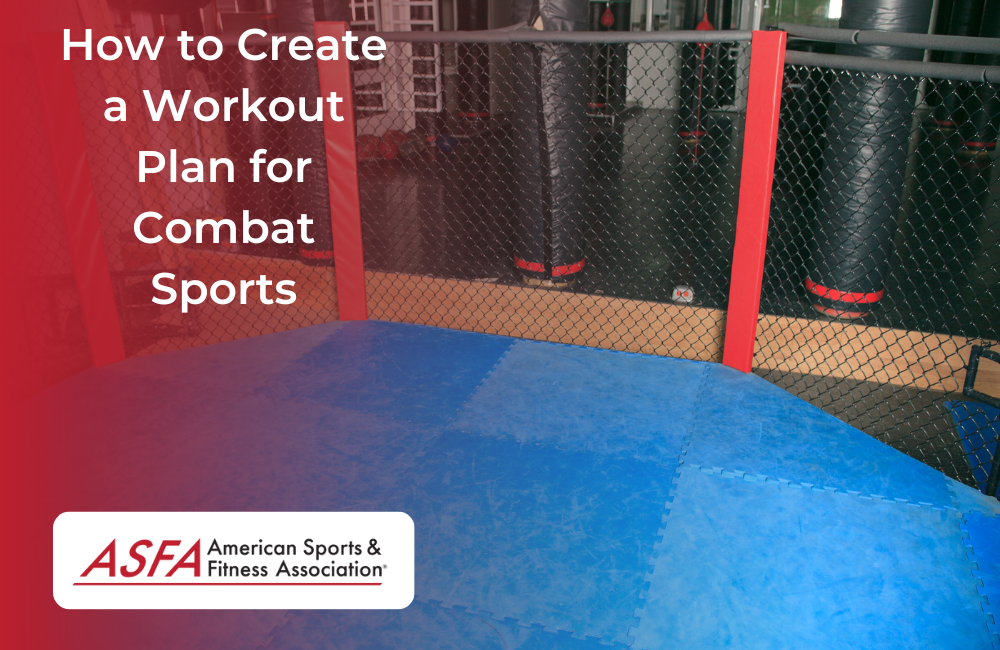Athletes seeking to excel in combat sports such as boxing, MMA, and Muay Thai must possess a diverse range of skills, encompassing strength, power, endurance, and agility. To achieve a holistic fitness routine that effectively targets all these crucial areas, this article aims to explore the process of developing a personalized workout plan designed exclusively for combat sports.
Identify Your Goals
The first step in creating a workout plan for combat sports is to identify your goals. Do you want to improve your strength, power, endurance, or agility? Are you training for a specific fight or competition? Once you have identified your goals, you can tailor your workout plan to meet your specific needs.
Focus on Strength Training
Strength training is an important component of any combat sports workout plan, as it helps build power and explosive strength. Exercises such as squats, deadlifts, and bench press can help improve overall strength, while exercises such as medicine ball throws and plyometrics can help improve explosive strength.
Incorporate Cardiovascular Training
Cardiovascular training is essential for combat sports, as it helps improve endurance and stamina. Running, cycling, and HIIT workouts are all great options for improving cardiovascular fitness.
Include Plyometric Exercises
Plyometric exercises are explosive movements that can help improve power and agility. Examples of plyometric exercises include box jumps, jump squats, and burpees.
Practice Martial Arts TechniquesPracticing martial arts techniques is important for improving technique, timing, and coordination. Shadowboxing, hitting the heavy bag, and sparring are all great ways to practice martial arts techniques.
Focus on Core Strength
Core strength is essential for combat sports, as it helps improve balance and stability. Exercises such as planks, Russian twists, and sit-ups can help improve core strength.
Rest and Recovery
Rest and recovery are essential components of any workout plan, as they allow your muscles to repair and regenerate. Be sure to take rest days, get enough sleep, and fuel your body with nutritious foods.
Sample Workout Plan
Here is a sample workout plan for combat sports that incorporates the above components:
Day 1: Strength Training
- Warm-up: 10 minutes of jogging or jumping jacks
- Squats: 3 sets of 10 reps
- Deadlifts: 3 sets of 8 reps
- Bench press: 3 sets of 10 reps
- Medicine ball throws: 3 sets of 10 reps
- Plyometric push-ups: 3 sets of 10 reps
Day 2: Cardiovascular Training
- Warm-up: 10 minutes of jumping jacks or high knees
- Running: 30 minutes at a moderate pace
- Cycling: 30 minutes at a moderate pace
- HIIT workout: 20 seconds of work followed by 10 seconds of rest for 8 rounds
Day 3: Martial Arts Techniques
- Warm-up: 10 minutes of shadowboxing or jumping rope
- Heavy bag: 3 rounds of 3 minutes each
- Sparring: 3 rounds of 3 minutes each
- Cool-down: 10 minutes of stretching
Day 4: Rest and Recovery
- Rest day or light stretching and foam rolling
Day 5: Core Strength
- Warm-up: 10 minutes of jogging or jumping jacks
- Planks: 3 sets of 1 minute each
- Russian twists: 3 sets of 10 reps
- Sit-ups: 3 sets of 15 reps
- Leg raises: 3 sets of 10 reps
Day 6: Plyometric Exercises
- Warm-up: 10 minutes of jumping jacks or high knees
- Box jumps: 3 sets of 10 reps
- Jump squats: 3 sets of 10 reps
- Burpees: 3 sets of 10 reps
- Plyometric lunges: 3 sets of 10 reps each leg
Day 7: Rest and Recovery
- Rest day or light stretching and foam rolling
Tips for Creating a Successful Workout Plan for Combat Sports
- Be Consistent
Consistency is key when it comes to creating a successful workout plan for combat sports. Aim to work out at least 3-4 times per week, and stick to your plan as much as possible.
- Listen to Your Body
It is important to listen to your body and make adjustments to your workout plan as needed. If you are feeling tired or sore, take a rest day or adjust the intensity of your workout.
- Fuel Your Body Properly
Proper nutrition is essential for any workout plan, especially for combat sports. Be sure to fuel your body with nutritious foods such as lean protein, complex carbohydrates, and healthy fats.
- Stay Hydrated
Staying hydrated is important for overall health and can also help improve performance during workouts. Aim to drink at least 8 glasses of water per day, and more if you are exercising or sweating heavily.
- Get Professional Advice
If you are new to combat sports or unsure about how to create a workout plan, consider seeking professional advice from a certified personal trainer or martial arts instructor.
In conclusion, creating a workout plan for combat sports can be challenging, but it is essential for improving strength, power, endurance, and agility. Incorporating strength training, cardiovascular training, plyometric exercises, martial arts techniques, core strength, and rest and recovery can help you achieve your goals and improve your overall performance. Remember to be consistent, listen to your body, fuel your body properly, stay hydrated, and seek professional advice if needed. With dedication and hard work, you can train like a fighter and achieve your fitness goals.





